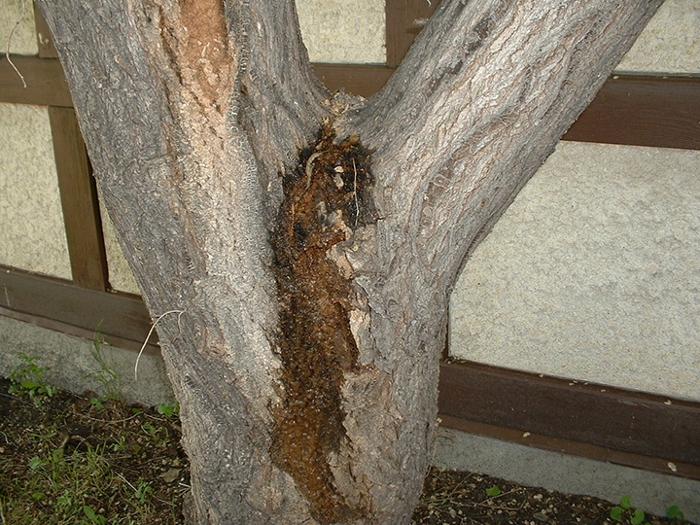
Wetwood of elm and other trees
Multiple species
Bacterial
Symptoms:
- The disease occurs in the crotches or where there are wounds on trees.
- Symptoms are
a bleeding or seeping of foul-smelling slime from cracks and wounds in the wood flowing down the bark. As it dries, a light grey to white incrustation is left. - Most
wetwood in the large branches or trunks of trees appears confined to adiscoloured control zone and to the innermost sapwood free ofdiscolouration but may extend almost to the cambium in wounded stems.
Control:
Wetwood is not generally deadly and will not kill a healthy tree but trees that are already stressed, old, or weakened from poor or compacted soils may experience dieback in the affected branch or across multiple branches. Over time, these losses could eventually kill an already weakened tree.- There is no control for the disease nor preventative treatment to avoid the initial infection and eventual development of bacterial
wetwood . Methods that reduce the tree's internal pressure are no longer recommended treatments and should be avoided. - To prevent
wetwood avoid wounding your tree, maintain your soil health and avoid soil compaction.
For more information see:

